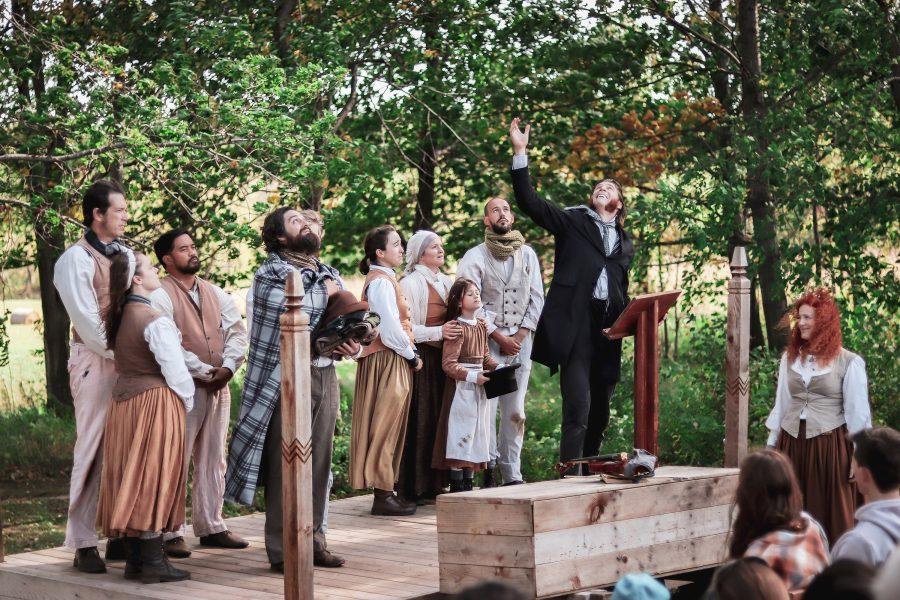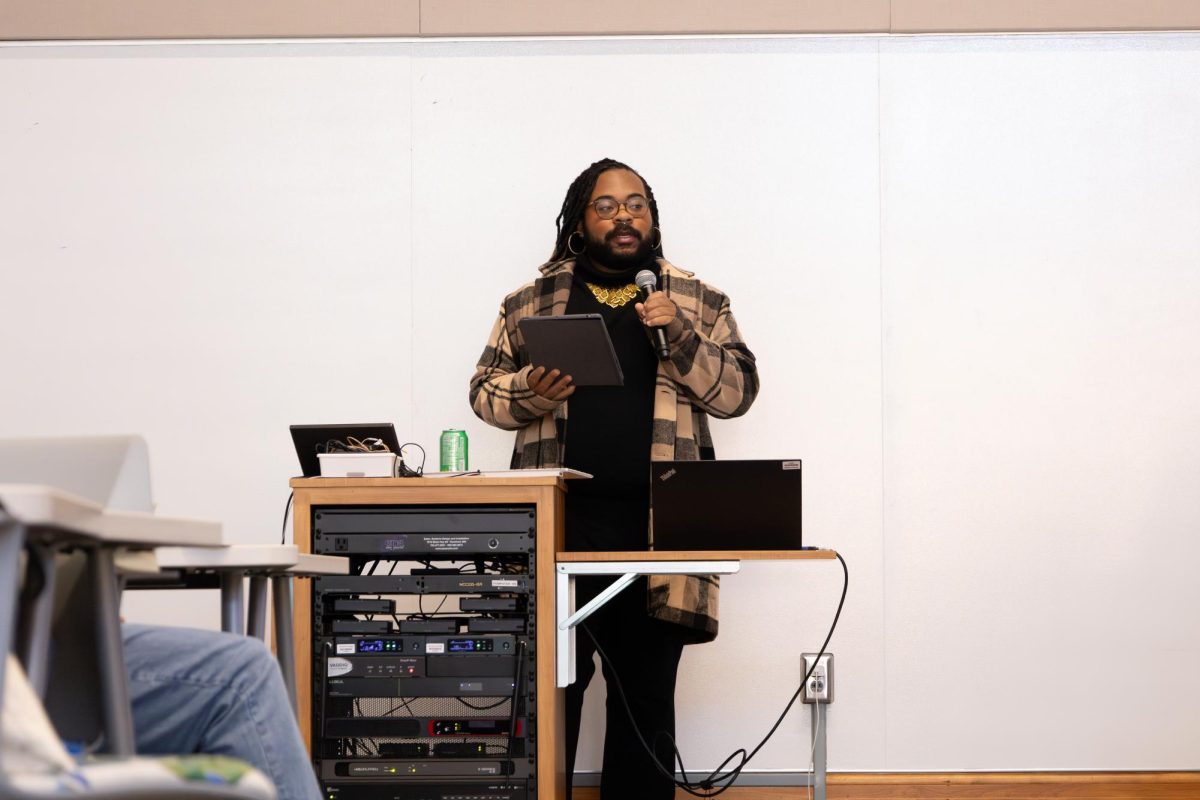Early Saturday evening, I went to see a play. I did not take a bus to the Twin Cities or ride my bike to the Weitz; I walked to the Rec parking lot and was pointed into the Arb. For this play’s stage is the same as its subject and its title: Nature.
The play was presented by TigerLion Arts, a Minneapolis-based theater company whose vision is to “celebrate human wisdom and the spirit of nature through creative works that awaken, inform, and delight.” Nature certainly honors these goals: in the company’s signature style, it is a “walking play” where audience members follow Ralph Waldo Emerson (Tyson Forbes) and Henry David Thoreau (Jason Rojas) around an outdoor space, while figuratively following their life journeys.
The play has been on national tour for several years, setting up stages in parks and arboretums across the Midwest and Massachusetts. An earlier version came to Carleton in 2015. Steve Richardson, Puzak Family Director of the Arts at Carleton, said it was “such a success… that when the opportunity arose to bring it back, we jumped at it.” Both times, hosting the play at Carleton has been a collaboration between Richardson and Nancy Braker, the Puzak Family Director of the Cowling Arboretum. Richardson savors this partnership, as he finds Nature to be “a great showcase for the Arb, and for the idea of making art in untraditional places.”
It certainly was exciting to see the Upper Arb transform into a stage. For days preceding the performance, I eagerly spied on student theater workers setting up scattered pedestals, platforms, and even a makeshift house during my afternoon runs. When I arrived at the first of these on Saturday afternoon, I was immediately swept up into the performance. The weather was what I can only describe as “blustery,” with strong winds whipping through the trees. At first, the actors had trouble speaking over the sound, but as they got rolling, their voices cut through clearly. The wind added to the effect of the first scene, where a traditional Christian prayer morphs into praise of all things natural, full of song and music and dance.
Such is the essence of the entire production. Forbes and Rojas move effortlessly from one stage of their characters’ lives to the next while watched over by a spectral embodiment of Nature (Norah Long). The ensemble is constantly in motion, alternating between individual portrayals of Emerson and Thoreau’s vast circle of family and friends and a Greek chorus who recite their lines in rhythmic succession or melodic unison. Many double as musicians in a makeshift orchestra, playing music composed by Dick Hensold to echo popular folk songs of the time. In this production, Carleton students Jacob Dyck ’22, Alexander Frieden ’20 and Rina Tanaka ’20 comprised a community chorus who add their voices and a local presence to the performance. All members of the cast and crew mingled seamlessly with the audience, walking with them and inviting them to become part of the performance. This is a play without a fourth wall; indeed, without any walls at all.
If you are looking for a clear historical timeline of Emerson and Thoreau’s lives, Nature is not the play for you. Instead, you will be thrown into emotional sketches ranging from meals at Walden to laments of industrialization to fraught love letters with Emerson’s wife, Lidian (Thallis Santestaban). You will feel the anxiety of their world and the tension of their rivalry, then take a deep breath as their shared passion prevails in the end. You will emerge wanting to know more about these two men whose minds you have just spent an hour and a half walking inside.
But for me, the most memorable moments of the play did not come from man, but from nature. In one scene, where Emerson and Thoreau take a walk through a field while Nature plays the fiddle, two raptors emerged from behind the trees and began circling overhead as if they had been summoned. As the music built to a climax, a flock of songbirds burgeoned up and burst into song. For a truly transcendental moment, the character Nature existed in perfect harmony with her domain.
And as the subject matter grew bleak, so did the environment. During an industrialized march to Walden, with workers urging the audience forward in “progress,” no birds sang, and only a few patches of light were visible through the darkening clouds. At Thoreau’s death, the air grew cold, and back at the first stage for the final funeral scene, the wind blew just as vigorously as it had at the beginning. The chill in my bones did not come from the fall air alone.
The directors didn’t summon the birds or control the wind. But they were certainly aware of their natural lighting booth and stage crew, and used them to draw in their audience and prove the play’s point: by working with instead of against nature, our world can achieve unity. If Nature is ever in my neck of the woods again, I will gladly walk once more with Emerson and Thoreau.











